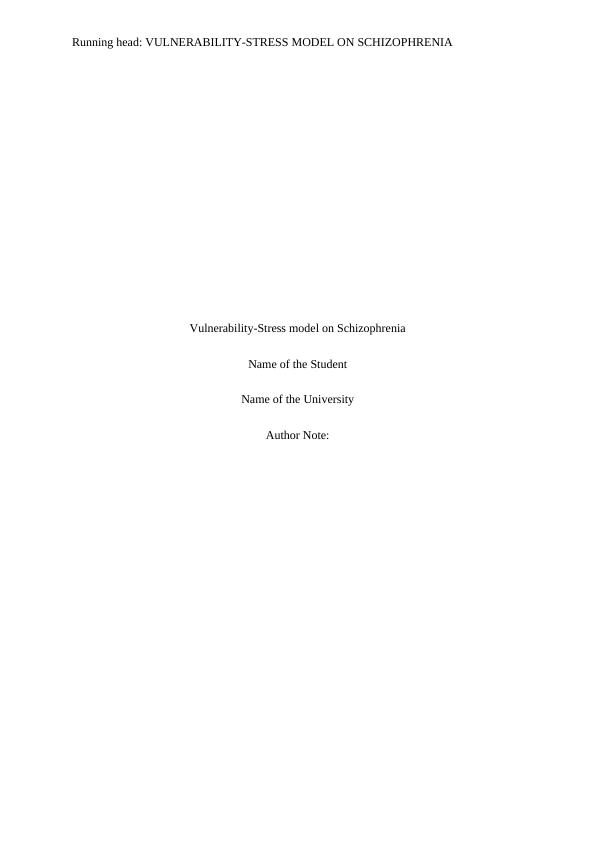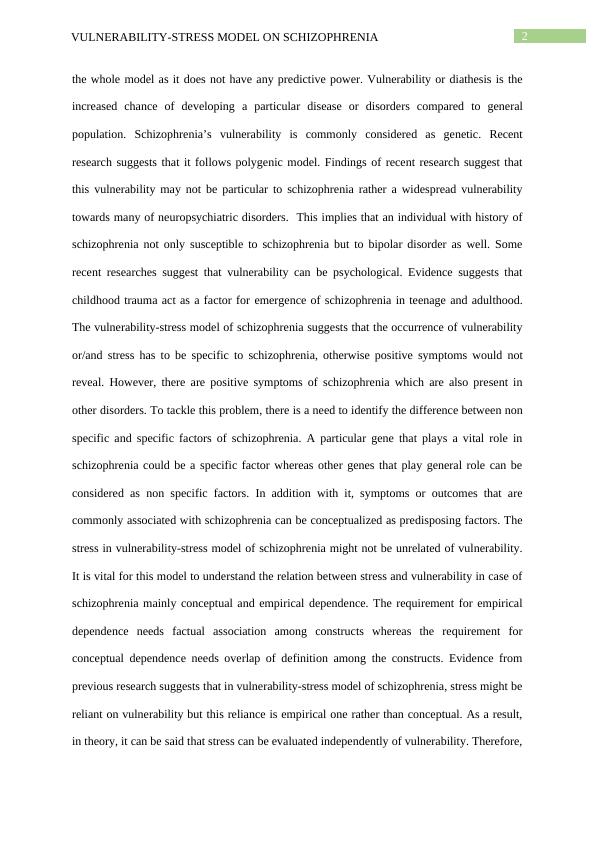Vulnerability-Stress model on Schizophrenia
Choose one theoretical model of mental illness and explain
8 Pages2211 Words93 Views
Added on 2023-06-03
About This Document
This essay discusses the Vulnerability-Stress model of schizophrenia, co-morbid disorders, interventions, and recovery. The model involves two factors, vulnerability and stress, and helps demonstrate the mechanism of schizophrenia for therapy and clinical management.
Vulnerability-Stress model on Schizophrenia
Choose one theoretical model of mental illness and explain
Added on 2023-06-03
ShareRelated Documents
End of preview
Want to access all the pages? Upload your documents or become a member.
Vulnerability Stress Paradigm
|11
|2193
|237
Schizophrenia: Causes, Symptoms, and Recovery
|5
|1095
|60
Schizophrenia Spectrum Disorder
|5
|1114
|113
Article Evaluation
|8
|1775
|88
QUESTION-ANSWER.
|16
|2973
|249
Disability Mental Health and the Criminal Justice System
|12
|3868
|349



